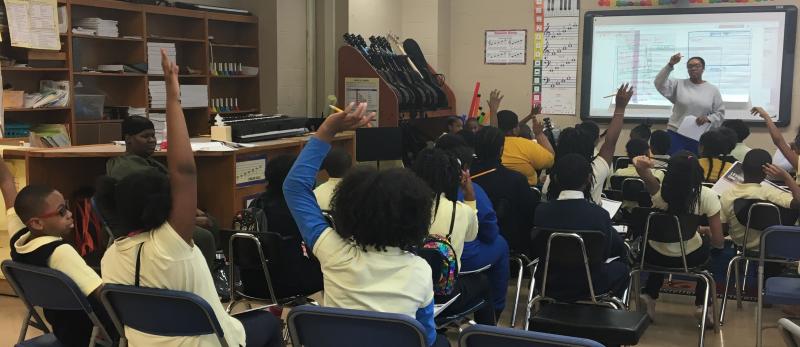Bridging the Gap

Respiratory Health Association (RHA) has been a leader and trail blazer in asthma education in and around the city of Chicago for many years. As an organization, RHA is always having to overcome new and challenging barriers to ensuring as many students, caretakers, and school staff receive the potentially life saving asthma management education and resources they deserve.
This year, the Health Educators observed a significant disconnect between the number of students in their Fight Asthma Now programs and the prevalence of pediatric asthma in the communities they serve. Data shows that about 13-14% of children here in Chicago are diagnosed with asthma, while Chicago Public School (CPS) data documents only 4.5% of their students as having asthma. This under-documentation leaves many children vulnerable and without the necessary resources to help manage their asthma while at school.
To help combat this disconnect we began reaching out to our community partners, who we've been working with to schedule programs (i.e. school nurses, school counselors, and case managers), to understand how they've been identifying their students with asthma. We learned that many of them were only using 504 plans (a plan developed to ensure that a child who has a disability or chronic disease receives the necessary accommodations to ensure their academic success and access to the learning environment), or student medical information forms. This method of identification prevents more than 40,000 students, who do not have their asthma documented, from receiving asthma education and other resources they need to manage their asthma while at school.
As advocates for our students, we want to ensure that they all receive the information they need to live healthy and happy lives. We began to modify the way we explain our programs and encouraged our school partners to work harder to identify all the students with asthma, not just those with documented cases. We encouraged them to not only use the 504 plans, but to also reach out to the teachers and other staff members in the school to survey the students and help get a more accurate number of asthmatic students in their schools. This not only allows the students to participate in our programs and receive a free spacer to use with their asthma medications, but it also allows the school to establish a more realistic sense of how many of their students are affected by asthma. From these changes, we've seen a significant increase in the number of students we educate in our programs and an increase in communication between school administrators and parents regarding the health of the students.
This challenge has shown me that my role as an Health Educator is not only to teach students about their asthma, but to also serve as a facilitator or liaison for various points of communication. I want students who don't have the necessary paperwork to leave my class feeling empowered and inspired to advocate for their own health. I hope that they will share what they've learned about their asthma with the families and play a more active role in making sure their parents are completing the necessary paperwork, ensuring that they have their medications, and are visiting their primary health care provider frequently.
This blog post was written by NHC Chicago 2017-18 member LaRandi Lowe.
LaRandi is a Health Educator at Respiratory Health Association.